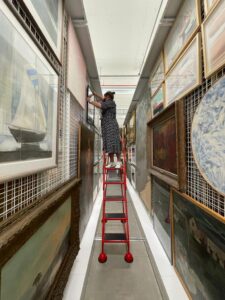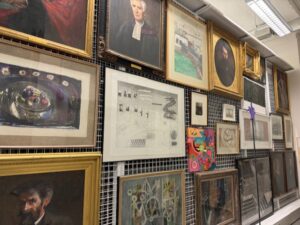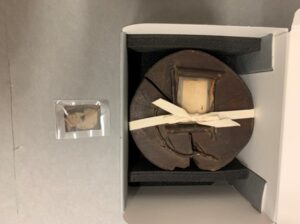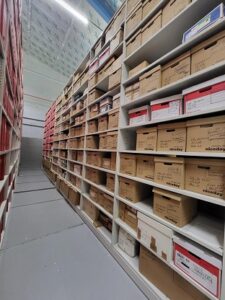Anyone who has attended a meeting, had a conversation in the corridor, or bumped into me in one of our stores, knows that one of my main talking points for at least the past 5 years has been my ambition to undertake a campus-wide audit of the Art Collection. Obviously, there have been a few major world events that have hindered this, but it’s finally happening!
With over 8000 works in the collection, and at least 31% of them on display around campus (1845 works over 415 separate locations!), it’s not a straightforward job. We will have to gain access to office spaces, lecture halls, corridors, and seminar rooms, as well as taking a deep dive into the artworks held in storage.

Anna checking artworks in store
As usual, we rely on a spreadsheet to keep us in check. Although the most important detail is updating the location, we are also looking at the condition of the artworks, whether they need to be photographed, and what fixings are installed on the back. All of this will make it easier for us to provide access (online, for exhibition, teaching, or loan) or identify artworks that need further work to make them available. This information will be uploaded to our Collections Management Database (Vernon CMS) to enable greater location control and improve overall information on each of the artworks.

Artworks in store
The audit has begun in earnest, with 2313 works in storage listed and locations updated as of the beginning of this month. Alongside this work, our Documentation Assistant Gaby is also running trials on the use of barcodes on artworks for location control, which I’m sure you’ll be able to read about in a future blog post! We’ll be out and about on campus for the next year, so please say hello if you spot us.
Anna Hawkins
Museum Collections Manager




